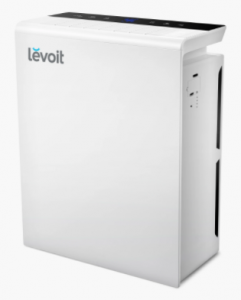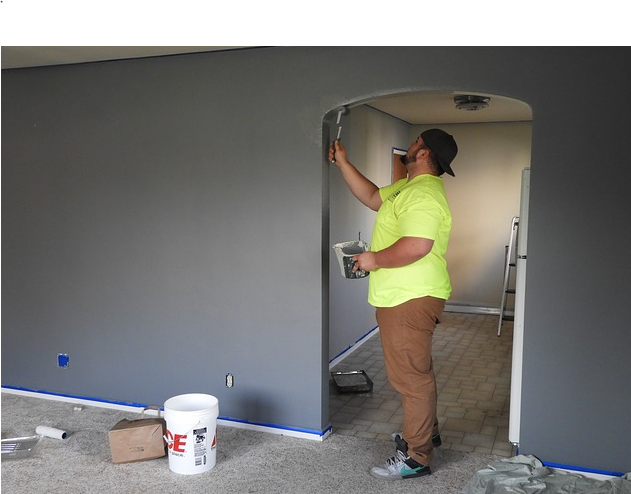Do air purifiers remove VOCs? Yes, they do. However, not all air purifiers can eliminate VOCs from your indoor space. So, today we will answer this question in depth so that you can be sure which air purifiers to go for.
First, you need to know what VOCs are, where they come from, and finally what qualities your air purifier must have for maximum efficiency. Once you know this, you can confidently pick one of the best air purifiers on the market to help you fight VOCs.
What Are VOCs?
The term ‘VOCs’ is the short form for volatile organic compounds. Volatile organic compounds are a broad classification of organic gases. Since there are over 10,000 chemicals that can be termed as VOCs, there is no strict definition. Below is one of the most common definitions of VOCs:
Volatile organic compounds are chemicals that readily vaporize at room temperature.
How Do VOCs Find Their Way into the Air we Breathe?
Since there are thousands upon thousands of VOCs, we can only focus on the most common sources, especially in households. These include cleaning products like detergents, building material, and beauty products.
VOCs easily evaporate and escape into the air from such products through a process called off-gassing. Off-gassing usually occurs when building material is pretty new, when you open cleaning products, or when you have just applied some beauty product such as a spray.

How long the VOCs last in the air depends on the rate of off-gassing which is determined by many factors such as:
- How fast do the VOCs evaporate? Some take long while others like ethanol in hand sanitizer evaporate very fast.
- Temperature – higher temperatures contribute to higher rates of off-gassing. So, if the temperature is low, VOCs enter the indoor air a bit slowly.
Do Air Purifiers Remove VOCs?
Now, we come to the main topic of the day: can you rely on an air purifier to eliminate VOCs? As mentioned at the start of the article, some air purifiers can help reduce VOC levels to normalcy. But what are the main features that the air purifier should have?
1. Activated carbon filter
Filters are the heart of an air purifier in terms of functionality. Without a filter, you just have a box through which air can pass. However, only the right kind of filter can remove VOCs effectively.
Most of the best air purifiers in Canada have HEPA filters. However, HEPA filters alone cannot help you remove VOCs properly. Some VOC particles are too small to be captured by HEPA filters. Instead, look for an air purifier that has activated carbon in its arsenal.
Activated carbon has the ability to absorb VOCs as well as other harmful pollutants such as smoke and odours. For the best results, consider buying an air purifier with a high amount of activated carbon (or activated charcoal).

2. ACH rating
ACH stands for Air Changes per Hour, which is the number of times all the air in a room is cleaned by the air purifier within an hour. For example, if a particular air purifier’s ACH is 5, it means that it cleans out all the air in the recommended room size every 12 minutes.
So, if you want to remove VOCs quickly, you need an air purifier with a high ACH rating.
3. Recommended room size
It is also very essential to know the recommended room size of an air purifier for VOC removal. We always recommend that you buy an air purifier that is perfect for your rooms, or one that is meant for bigger rooms.
Once you do this, you are guaranteed maximum performance. Also, if you place a small-room air purifier in a big room, you will not achieve the ACH rating highlighted by the manufacturer. It will, therefore, take longer to remove the VOCs from your home.
4. CADR rating
CADR rating (Clean Air Delivery Rate) shows how fast an air purifier removes certain particles from the air. The three pollutants used to come up with CADR scores are smoke, pollen, and dust. Even though VOCs are not used to measure CADR, a high CADR rating shows that the air purifier is very efficient.
So, you can use CADR as a gauge of how likely an air purifier is to remove VOCs from your indoor space.
5. Other factors
After an air purifier meets the above criteria, there are other things that you may want to check before paying for it:
- Pricing
- Filter change indicator
- Power consumption
- Filter life
- Noise level
- Air quality sensors
- Size and weight
- Cost of replacement filters
Related articles:
Other Ways of Combating VOCs Apart from Using an Air Purifier
An air purifier can help to remove or reduce VOCs from your room. However, there are a few things that you can do as well.
- Before you move into a brand new house, ensure that it is completely dry and all or most of the smell is gone.
- After renovations, take some time before moving back into the house. We recommend that you wait for 2 to 8 weeks till VOC levels go back to normal. Of course, you can use an air purifier to quicken the process.
- After using beauty or cleaning products, ensure that the room is well ventilated. This will help to clear the VOCs quickly.
- Only use low-VOC products in your home. Also, these products must by independently certified by third parties such as UL (GREENGUARD) and Green Seal.
Conclusion
Do air purifiers remove VOCs? Yes, they do, but not all of them. If you use lots of cleaning or beauty product, you may want to invest in a good air purifier to help you remove vaporized chemicals quickly.
Also, after undertaking a renovation project, an air purifier can help clear out VOCs faster.
The ideal air purifier for VOCs must be powerful and efficient. More importantly, it must have activated carbon as part of its filtration system. Not only does activated carbon eliminate VOCs, but it also absorbs odours.
The below YouTube video by the Indoor Air Quality Association sheds more light on VOCs:

